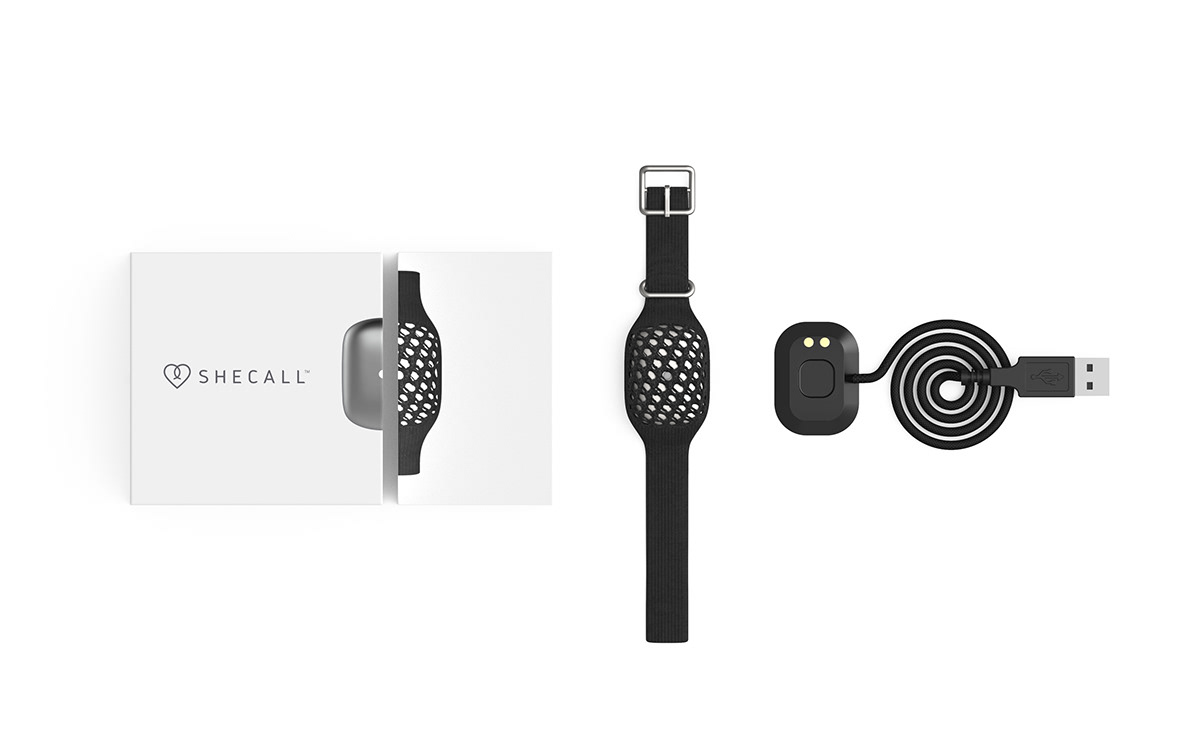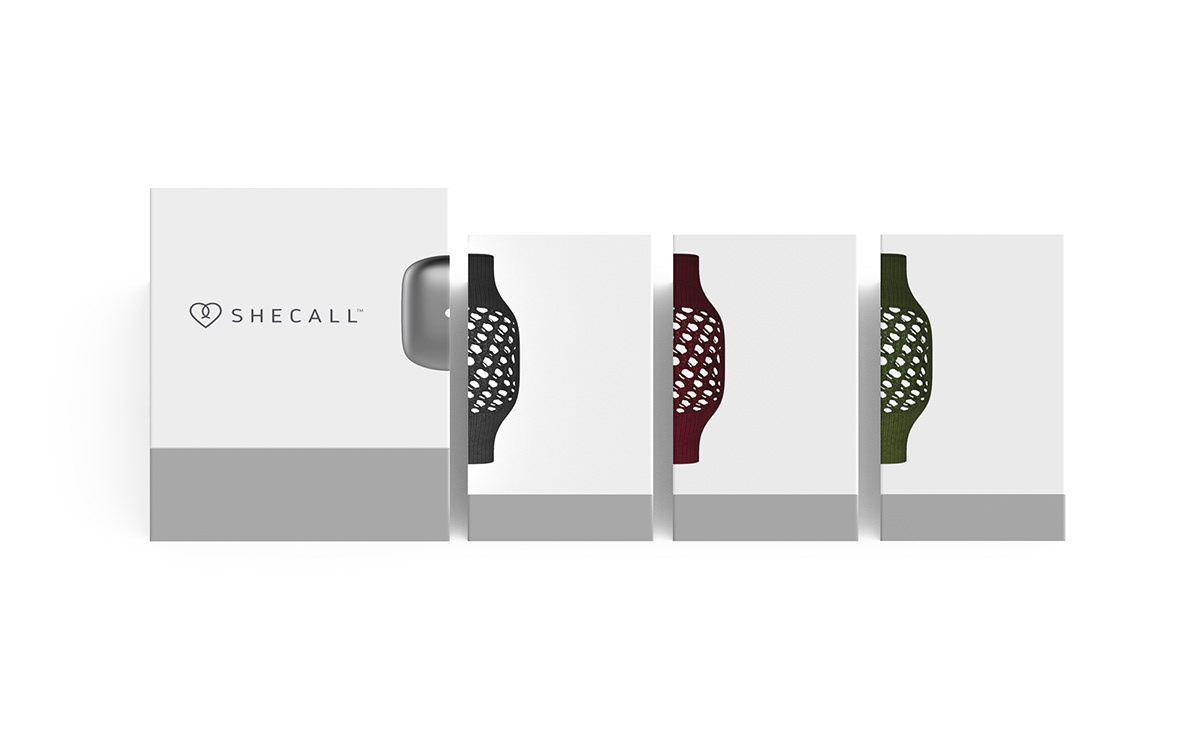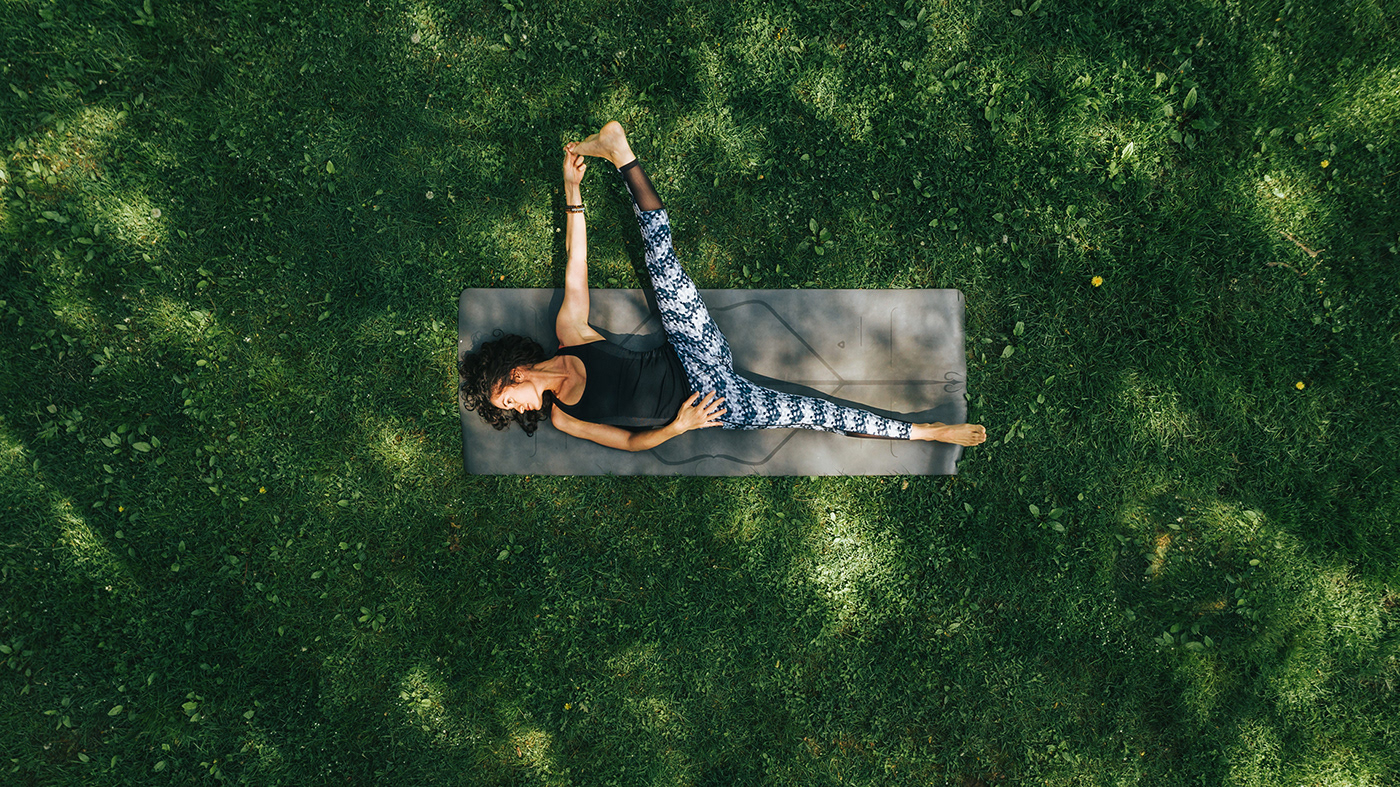
THE CHALLENGE
SAFETY WITHIN
STYLE, FROM
START TO FINISH
Several years ago we were lucky enough to cross paths with a team that was working on a smart bracelet project. The idea behind the project, ‘Shecall’, was to launch a device that would be activated in a time of need, allowing people to feel considerably safer through simply wearing something discreet.
The idea was solid, but the concept was still very much in its infancy. We were brought in to aid the development of both the product and the brand.
THE LANDSCAPE
BRIDGING THE GAP
When we began, the world of wearable devices was in its launch and growth phase. The market was dominated by a few companies which mainly developed products for fitness tracking.
There was a gap which needed to be bridged, as a device that measures sports performance is very different from a device for personal safety. The former is activated by the user when exercising, while the latter requires continuous monitoring of our stress-arousal parameters to highlight peaks outside the normal activity pattern.
Critical aesthetics
The design of the device would play an important role. Its appeal would come from being a safety device which didn’t look like a safety device. It had to be discreet and elegant - an enjoyable accessory to wear.

PRODUCT
WORKING TOWARDS
TWO CORE
OBJECTIVES
In designing the device we had to keep two key objectives in mind. We needed to create a device which was aesthetically pleasing and enjoyable to wear, or the product would lose a huge part of its attraction. However, we also knew that the technology needed to be impeccable. Inadequate tech could have caused incorrect detection of normal activity, sending unnecessary alert calls, or worse, critical situations being missed. Neither aesthetics nor technology could be prioritised; both were essential.
After various iterations we were able to define 2 main elements: a mock gemstone that would enclose the technology, keeping it safe and protected, and an attractive strap that would wrap around the wrist.

Gemstone
Continuous stress-arousal monitoring required cutting-edge technology, which was not possible to miniaturize for the launch of the first device. We worked on a capsule that would best suit the shape of the wrist and remain sleek enough to keep the product discreet. We decided to tweak the capsule’s aesthetics to bring it closer to the look of a precious gemstone, a common feature in the world of accessories.


App
The bracelet hardware sends all relevant data to an app with simple UX. As the device is used passively, the user will only use the app to measure and sample benchmark patterns whilst doing different types of activities. When stress levels hit a certain point that can be associated with a dangerous situation, the app automatically alerts previously selected contacts and requests help.
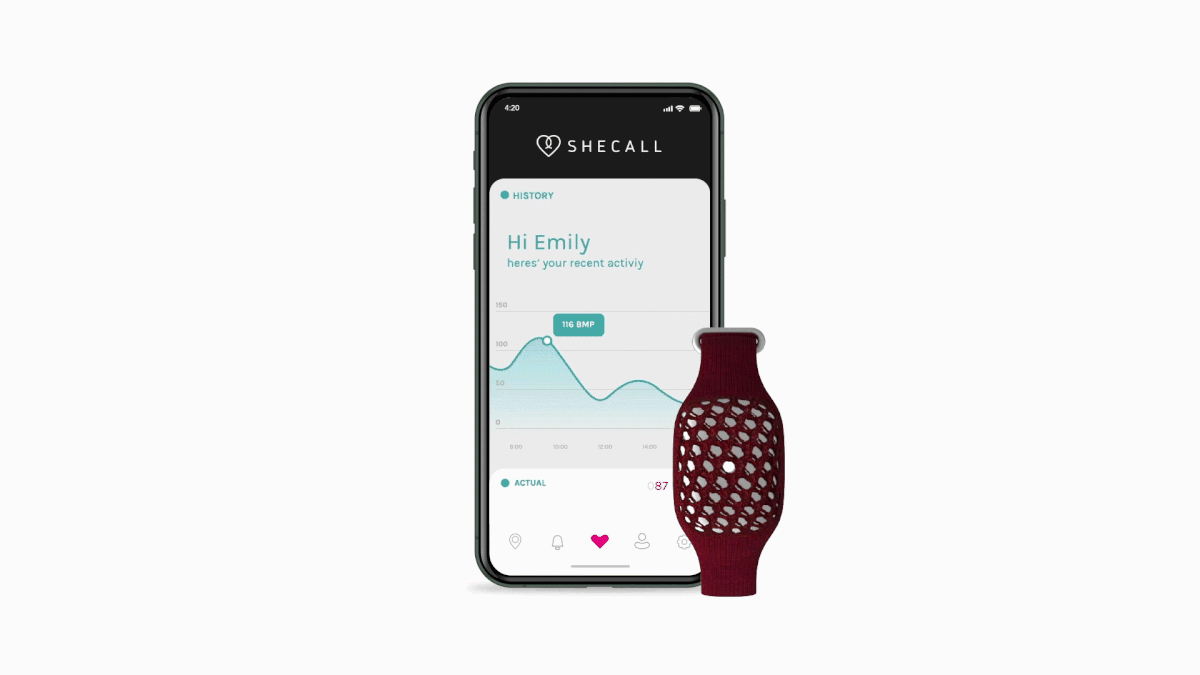
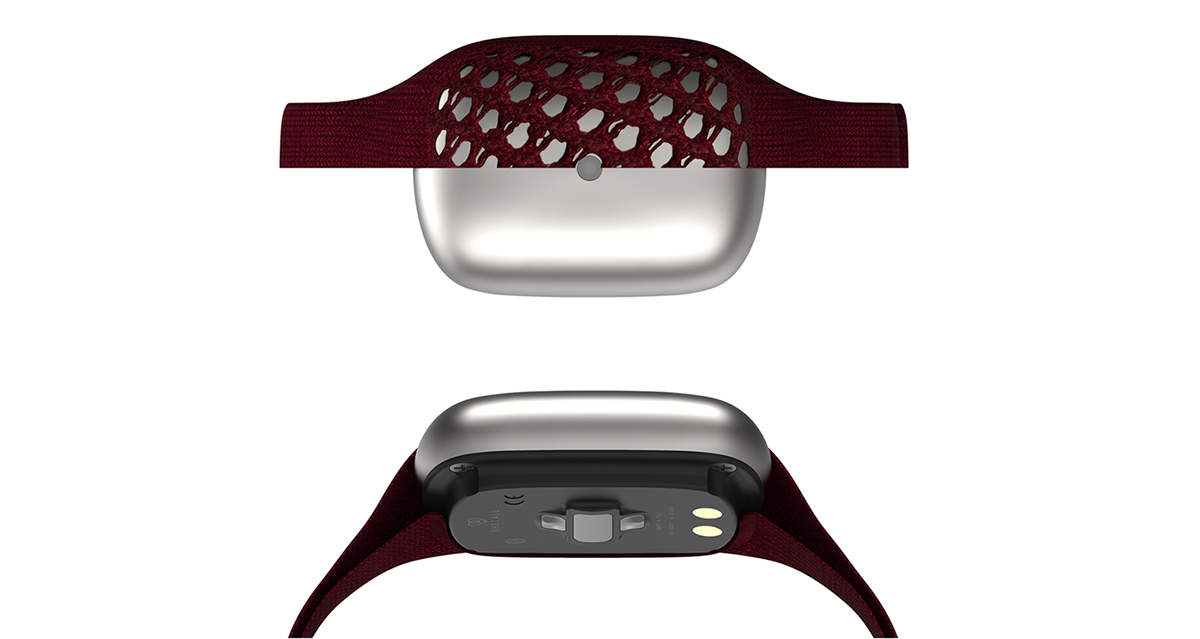
Flyknit comfort as a requirement, not an additional benefit
As we weren’t able to get too creative with the design of the gemstone (due to the requirements of the technology), we decided to focus our research on the strap. To gauge the taste of an audience which was not necessarily interested in the world of wearables, we orientated our research to materials that were not instinctively ‘tech’ related.
In addition, the continuous monitoring needed for the product to be effective requires a high level of comfort. We therefore excluded rigid materials that could cause abrasions and/or limit perspiration.
We turned to flyknit technology, never used before in the world of wearables. Flyknit is a fabric jersey that could guarantee elasticity, comfort and a unique design in different color variations.
Patent
Bringing this technology into an entirely new context required a lot of research and collaboration with Centrocot, Acquafil and Shima Seiki, which led us to patent the process of using this technology in the wearable industry.

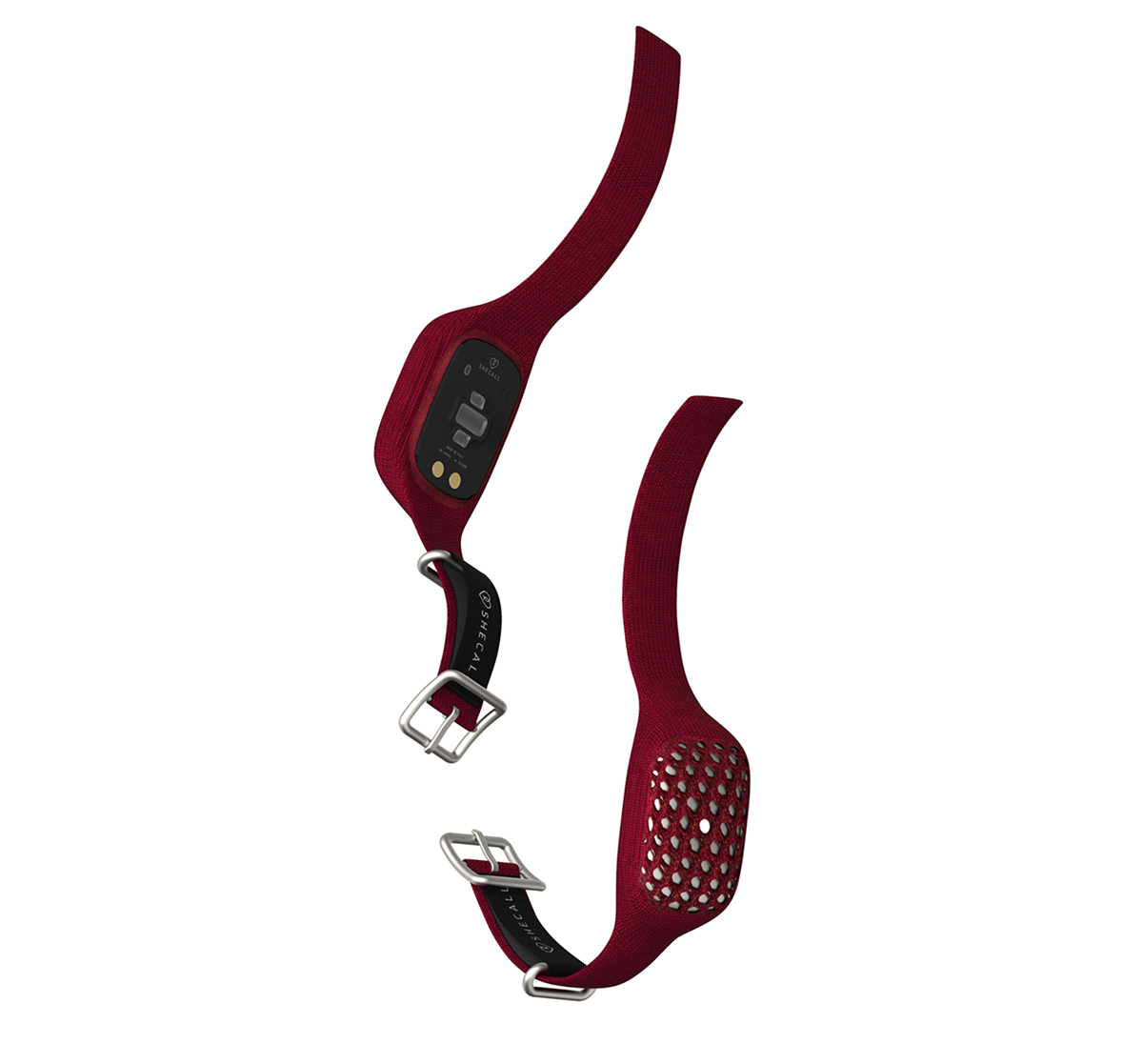
Strap
The strap is made up of a tubular mesh which stretches over the gemstone, revealing its attractive face whilst ensuring it sits comfortably on the wrist with a breathable and hypoallergenic material.


Recharging
Opening the mesh on the back allows for charging without extracting the gemstone, as well as changing the strap, which is designed to be an interchangeable element available in different colors.

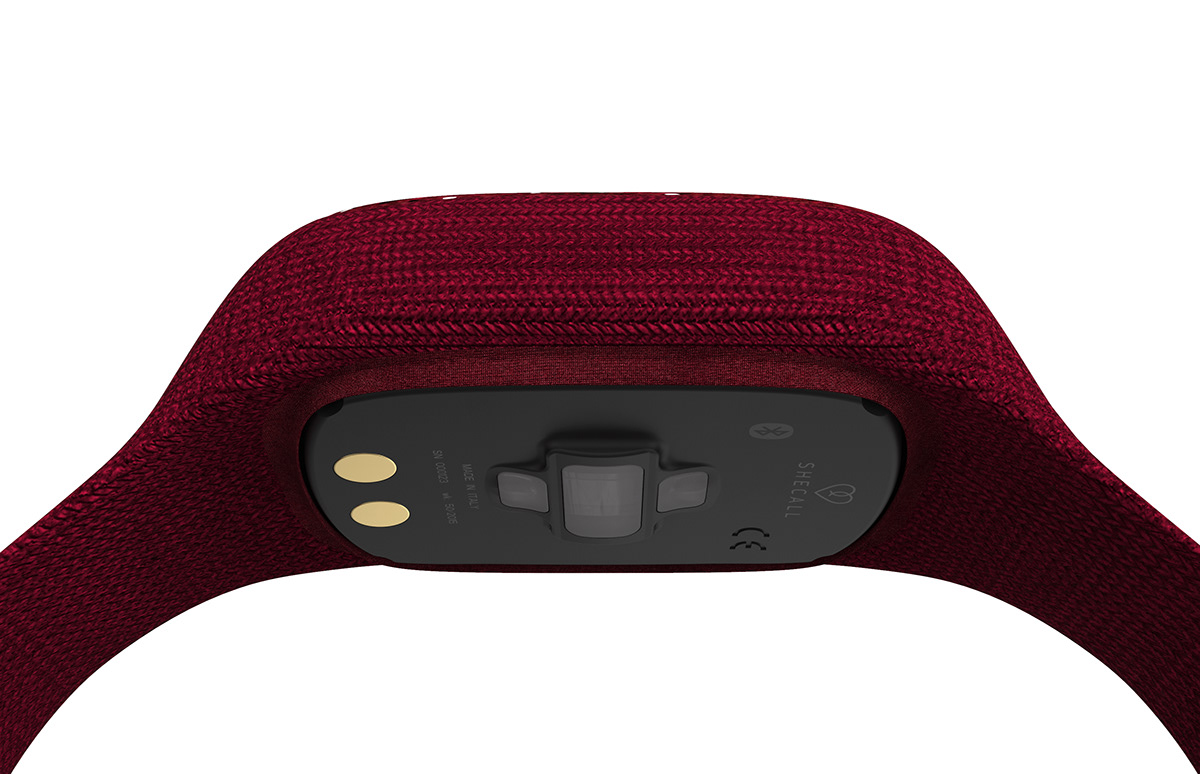

BRAND
SAFETY, CARE,
REASSURANCE
Designing the logo we decided on a heart with an outline which intersects itself, forming a further loop. The heart represents the product in several ways, demonstrating it is something which cares for you, it is a health product and it is a health product and it acts as a constant reassurance in your life - like a heartbeat. The locking element of the loop represents the key themes of security and safety.

PACKAGING:
WHY WASTE
CARDBOARD?
The packaging design and imagery reflects the modular nature of the product, which allows each gemstone to be combined with multiple straps.
The physical packaging includes a rigid cardboard element that can be used as a support for charging the device.

